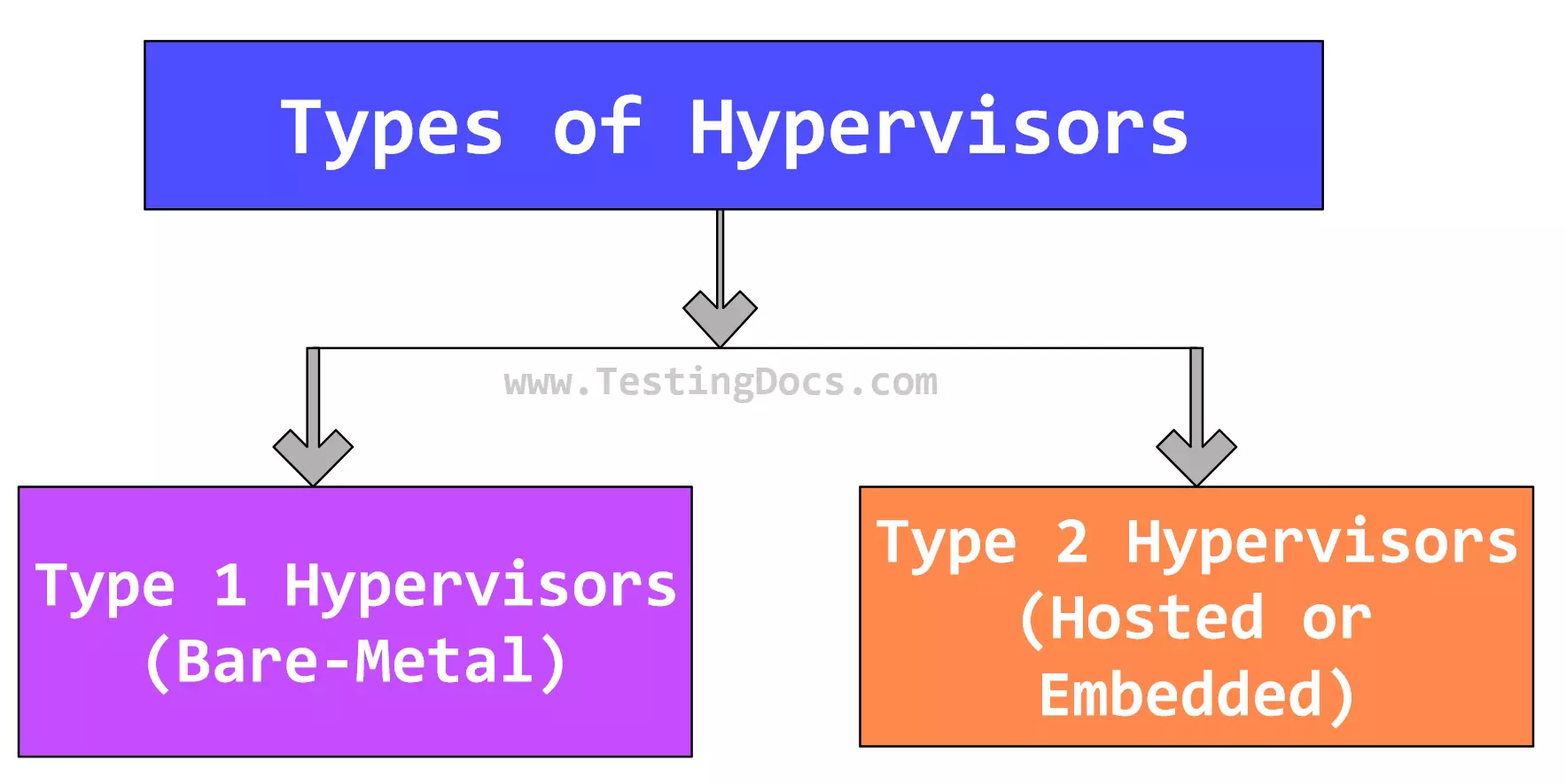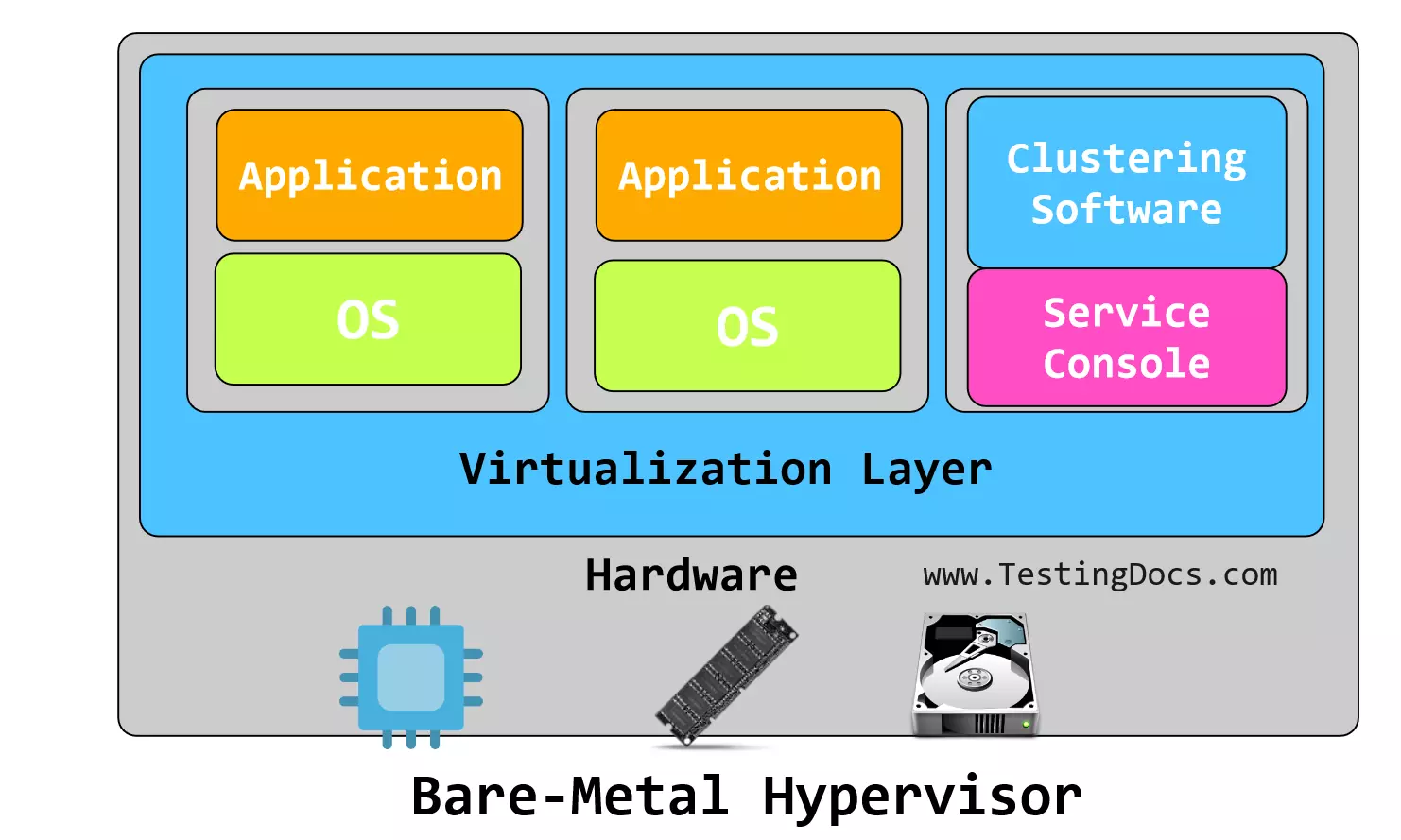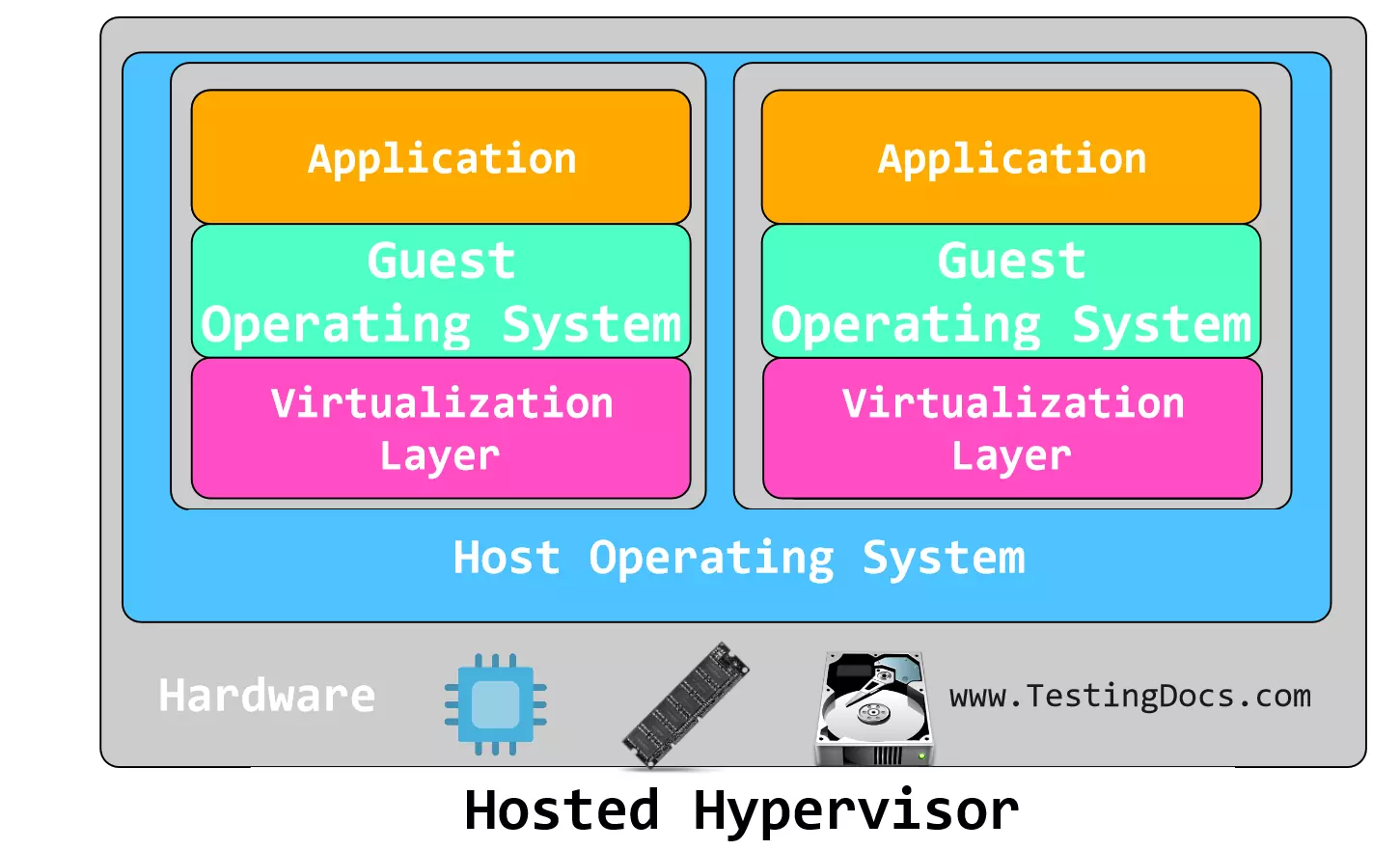Different Types of Hypervisors
Overview
In this tutorial. we will learn about different types of hypervisors. Broadly speaking, there are two types of Hypervisors. A hypervisor is a software that manages and monitors VMs(Virtual Machines).
Types of Hypervisors
Hypervisors are classified into the following two types:
- Type 1 Hypervisor(Bare-metal)
- Type 2 Hypervisor(Embedded)

Type 1 Hypervisor(Bare-metal)
Type 1 hypervisors are also called Native hypervisors. A bare-metal hypervisor runs directly and operates on the host computer’s hardware. Bare metal is the term used for physical computer hardware.

Type 1 hypervisors are positioned between the hardware and virtual machines. The virtualization layer in the above picture is the Bare-metal Hypervisor. The hypervisor interacts directly with the computer hardware that is being virtualized.
This is mostly used in Server virtualization solutions in Data centers. Examples of Type 1 Hypervisor are:
- Citrix Xen Server
- Microsoft Hyper-V server
- VMWare ESX server
Type 2 Hypervisor(Platform-Level)
Type 2 Hypervisor is application software that is installed as an application on the Host Operating System. Type 2 hypervisors are also called Embedded or Hosted hypervisors. Type 2 hypervisors are installed on top of the Host operating system. This enables users to create multiple virtual machines with different guest operating systems. In contrast to type 1 hypervisor, the hosted hypervisor is placed above the hosted operating system. The hosted hypervisor can be used to run a different type of operating system on top of the host operating system.

The host operating controls the computer hardware on behalf of the Virtual Machine OS. ( Guest OS). For example, we can install Type 2 Hypervisor on Windows 10 host operating system and run a Ubuntu Linux Guest operating system. In this case, Windows runs on the physical computer and is the host operating system. Ubuntu Linux is the Guest operating system for the virtual machine.
A hosted hypervisor sits on top of the host operating system. The hypervisor cannot boot until the host operating system is up and running. The major drawback of this virtualization is that if the host operating system crashes, all the virtual machines will be down and affected.
This virtualization software is mostly used in desktop virtualization solutions. Examples of Type 2 Hypervisors are as follows:
- VMWare Workstation
- VM Player
- Virtual Box
- Microsoft Virtual PC
Related Links
Install VMWare Workstation
https://www.testingdocs.com/download-and-install-vmware-workstation/
Create a Virtual Machine using VMware
https://www.testingdocs.com/create-virtual-machine-using-vmware-workstation/






